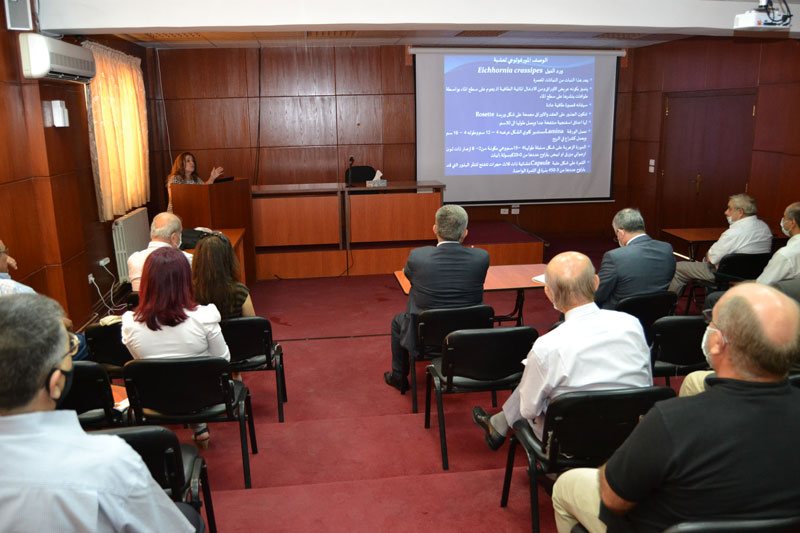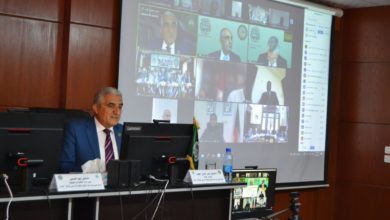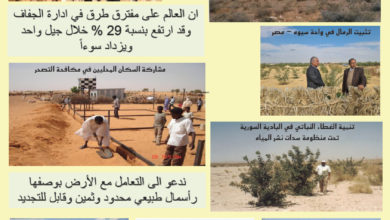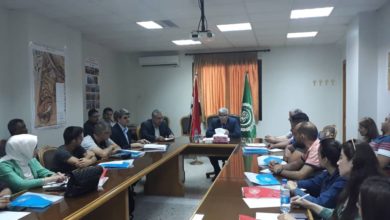The harmful Nile flower / symposium in ACSAD
The Arab Center for the Studies of Arid Zones and Drylands (ACSAD) has recently held a scientific symposium on “the harmful Nile Flower,” which is widespread in the water bodies, especially in the Syrian dams, particularly in the Mohardeh dam and along the Assi River, irrigation and sewage channels, in the presence of experts from ACSAD, universities and the Syrian Ministry of Agriculture, and experts from Arab countries.

Experts clarified that this herb causes great damages to the environment where it is reproducing in, especially in Al-ghab plain in Syria, where it leads to mechanical obstruction of water pumping machines, in addition to water evaporation in large quantities.
The experts discussed during the symposium the most important methods of combating this harmful plant through chemical methods using low-impact pesticides, noting to its damage by polluting water and the environment with toxic substances, besides the mechanical method which is based on removing this herb with machinery and manual equipment, in addition to biological methods of using insects that attack and feed on this herb.
In turn, experts agreed that the most important methods for combating this herb are integrated methods, based on all different methods. During the symposium, Dr. Randa Abu Tara of Damascus University gave a presentation on the origin, the life cycle of this herb, and environmental conditions appropriate for its spread, as well as its damages and methods of combating it.
The Director-General of ACSAD, Dr. Nasr Eddin Obaid, stressed in his speech that the organization, with its experts, is ready to exert all possible efforts and provide the possibilities to confront this harmful herb and identify obstacles. In addition to developing the work of combating it, and contributing to reducing the significant losses and damages caused by it through forming committees of various specializations and cooperating with the competent authorities in this regard to reduce it and find the appropriate solutions according to the possible methods.



